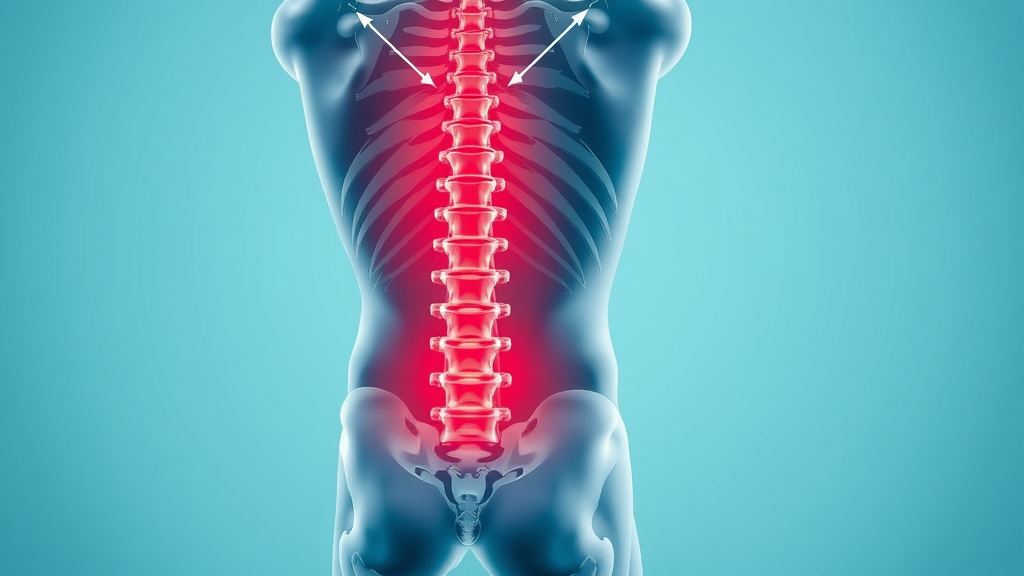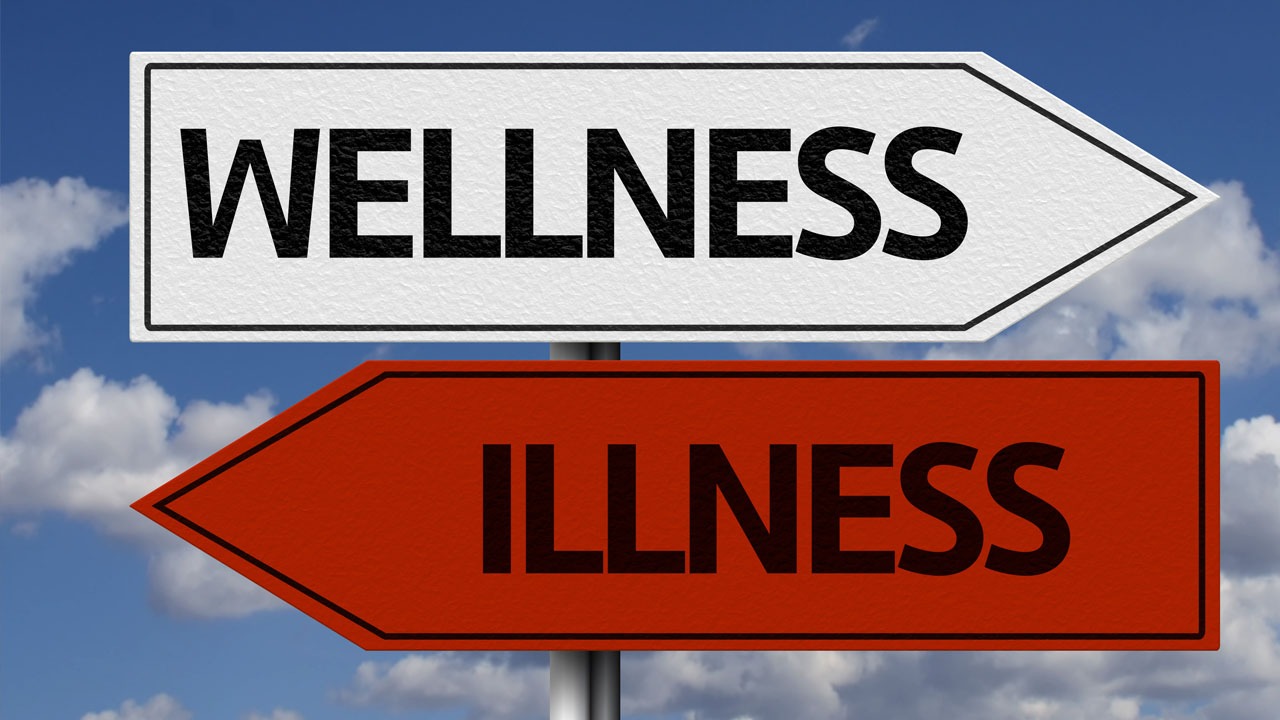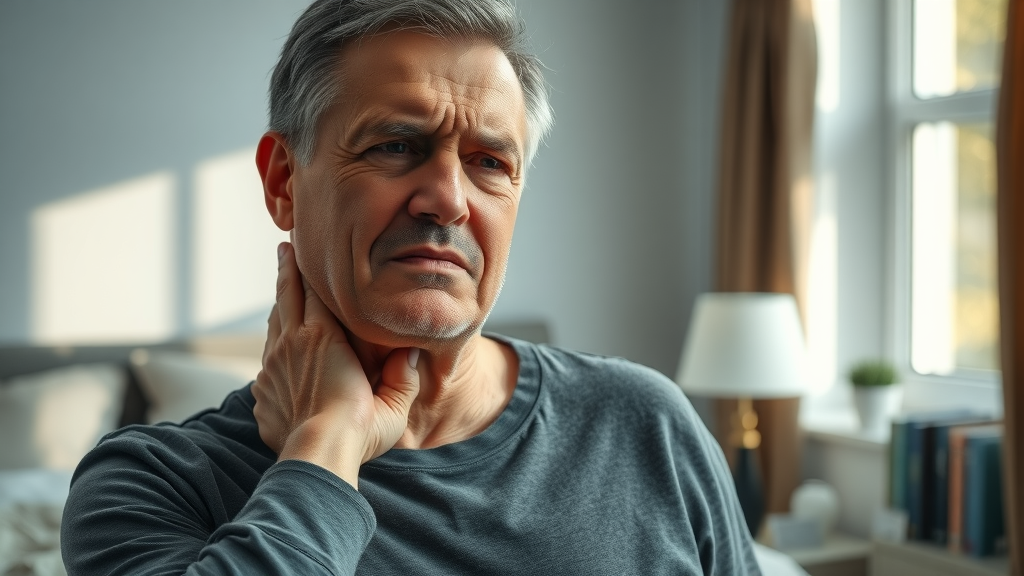Nearly 80% of adults experience back pain at some point in their lives, making it one of the most common health complaints worldwide. If you're tired of waking up to a sore, stiff back or missing out on your favorite activities because of discomfort, you're not alone. In this comprehensive guide, you’ll discover how to find lasting back pain relief using proven and practical solutions. You'll learn why so many struggle with lower back pain, which self-care and professional approaches really work, and how to prevent future flare-ups.
Unlocking Back Pain Relief: Why Millions Are Affected & How You Can Find Real Solutions
Back pain—whether it's from muscle strains, poor posture, or chronic conditions—affects millions globally, disrupting daily routines and overall well-being. The quest for back pain relief starts with understanding how lifestyle, habits, and underlying medical issues converge to create persistent discomfort. Recognizing that lower back pain is often rooted in modern lifestyles, such as hours at a desk or lack of consistent exercise, is the first step toward taking control of your health.
Many factors contribute to ongoing back pain include strained muscles, herniated discs, degenerative disc disease , and even stress. The good news is that evidence-based methods offer hope. From home remedies and stretching to professional interventions and weight loss, there are actionable paths forward for anyone determined to relieve back pain. This article walks you through these strategies, debunking myths and spotlighting real solutions for lasting relief.
- You’ll discover evidence-based methods for back pain relief, including practical steps to address lower back pain.
- The most common causes of chronic back problems and how to identify them.
- Proven home remedies and self-care strategies for immediate and sustained results.
- Guidance for choosing the most effective pain relievers and professional treatments.
"Nearly 80% of adults experience back pain at some point in their lives, making it one of the most common health complaints worldwide."

Understanding Back Pain Relief: Causes, Symptoms, and Types
Before finding effective back pain relief, it’s vital to understand the different forms back pain can take—and what triggers them. People frequently seek help for both sudden, short-term discomfort and chronic back pain, which can last for months or even become a lifelong challenge. Knowing what type of back pain you’re dealing with helps you choose the right relief strategies and interventions.
The low back area is particularly prone to issues, as it carries the weight of your upper body and undergoes significant stress with movement or sitting. Chronic back pain can result from lifestyle choices such as poor ergonomics, being overweight, or repetitive strain, while more acute back pain is often tied to a specific injury or event. Identifying symptoms, causes, and the longevity of your pain sets the foundation for long-term management and prevention strategies.
Key Causes of Lower Back Pain and Chronic Back Issues
The roots of lower back pain and chronic back pain are diverse—and sometimes overlapping. Poor posture from extended sitting or standing, especially with improper ergonomic support, is a leading contributor. Strained back muscles and ligaments can easily occur during everyday activities like lifting heavy objects, sudden or awkward movements, or without enough stretching before physical activity. Over time, the discs in your spine naturally wear down, often leading to herniated discs or degenerative disc disease , both common sources of chronic back pain.
Lack of physical activity weakens back muscles, reducing their ability to support the spine and increasing the risk of injury. Weight gain, especially around the abdomen, adds pressure on the lower back and amplifies discomfort. Sometimes, underlying medical conditions like arthritis, osteoporosis, or even kidney problems can masquerade as back pain, making proper diagnosis key for effective pain relief. Recognizing these factors provides a broader view of prevention and tailored management.
- Poor posture
- Strained muscles
- Herniated discs
- Degenerative disc disease
- Lack of physical activity
- Obesity and weight gain
- Underlying medical conditions

Recognizing Chronic Back Pain versus Acute Back Pain
Understanding the nature and persistence of your symptoms is crucial for successful back pain relief. Acute back pain generally strikes suddenly—perhaps after lifting something heavy or a sudden awkward movement—and lasts less than 12 weeks. Acute flare-ups typically respond well to home remedies like using an ice pack or heating pad, paired with gentle activity and rest. These cases are commonly linked to injuries or short-term muscle strain.
Chronic back pain, on the other hand, lingers for more than three months and may cycle through periods of improvement and relapse. The underlying causes are often more serious—such as degenerative changes, long-term posture issues, or chronic illness. Chronic pain is less likely to resolve on its own and usually needs a combination of self-care, medical evaluation, and ongoing management, sometimes involving interventions from a spine specialist or physical therapy.
| Acute Back Pain | Chronic Back Pain |
|---|---|
| Sudden onset, short duration | Lasts >12 weeks, recurring episodes |
| Often injury-related | May be related to underlying medical issues |
Back Pain Relief at Home: Effective Home Remedies and Self-Care
Many cases of back pain resolve with the right approach at home, so learning effective self-care is a critical part of achieving sustainable back pain relief. You don’t always need prescription pain medications to feel better. Factors like the use of a proper heating pad or ice pack , adopting gentle movement, and using appropriate over-the-counter pain relievers can significantly speed recovery—especially for low back pain and mild muscle strains.
Home remedies not only offer prompt pain relief, but they are often safer and more cost-effective than medical interventions, especially when symptoms are mild to moderate. That said, it’s essential to listen to your body—if back pain includes symptoms like severe numbness, loss of bladder control, or does not respond to self-care in a reasonable time, always consult your care provider for a thorough evaluation.
Top Home Remedies for Relieving Back Pain
Several home remedies have stood the test of time for providing back pain relief. Cold therapy—applying an ice pack to reduce inflammation in the first 24-48 hours after an injury—can prevent swelling. Switching to heat after the acute phase increases blood flow and relaxes tense back muscles, promoting healing. Over-the-counter pain relievers, like acetaminophen or NSAIDs, can address short-term pain when used as directed. Gentle stretching routines and Epsom salt baths also ease stiffness and support the natural recovery of low back pain.
- Cold and heat therapy
- Gentle stretching exercises
- Epsom salt baths
- Over-the-counter pain relievers
- Rest and ergonomic support
Lifestyle Adjustments for Sustained Back Pain Relief
For back pain relief that lasts, lifestyle changes are essential—not just for recovery but for prevention. Correcting posture, whether at work or home, ensures the spine is properly aligned and takes undue pressure off back muscles. Even small weight loss can make a noticeable difference for people with chronic back pain or low back issues, as excess weight strains the lumbar region.
Staying active is also fundamental, as long periods of bed rest can weaken your core, making it harder to support your back and causing longer recovery times. Incorporate short, gentle walks or simple yoga stretches into your daily routine, and prioritize ergonomic seating and supportive bedding. These small changes, reinforced consistently, help you relieve back pain and lower your risk of future discomfort.
- Maintaining correct posture
- Weight loss for back pain management
- Staying active and avoiding prolonged bed rest

When Professional Help is Needed: Physical Therapy, Care Providers, & Medical Interventions
Sometimes, the best way to relieve back pain is to seek expert advice. Professional support becomes crucial when home remedies are no longer effective, the pain becomes chronic, or there are signs of a more serious underlying issue. Health care professionals, such as your primary care provider, a physical therapist, or a spine specialist, can assess your situation with a detailed examination, recommend advanced pain relievers, and tailor a treatment plan specific to your needs.
Medical interventions for back pain relief may involve diagnostic imaging (like X-rays or MRIs), prescription treatments, or in severe cases, surgery. These steps are reserved for persistent or worsening pain that doesn’t respond to other measures. Timely intervention ensures you won’t ignore potentially serious conditions that could lead to long-term consequences.
Physical Therapy for Chronic Back Pain and Lower Back Pain
Physical therapy plays a central role in lasting back pain relief—especially for chronic back pain or repeated episodes of low back pain. A trained physical therapist will design a personalized program focused on core strengthening, flexibility, and correcting movement patterns that contribute to discomfort. With hands-on manual therapy and targeted exercises, you can restore function, reduce pain, and prevent further injury.
Additional benefits of physical therapy include posture education, ergonomics evaluations, and strategies to build long-term back health. A consistent routine can even reduce the need for stronger pain medications, minimize the risk of muscle spasms, and increase your confidence in managing everyday activities.
- Personalized exercise plans
- Manual therapy
- Posture correction and education
How Your Care Provider Can Help Relieve Back Pain
Your health care provider is uniquely positioned to guide your journey toward effective back pain relief. They will identify underlying causes with a comprehensive medical history and examination, order necessary imaging studies when needed, and ensure nothing serious is overlooked. Depending on your condition, care providers may recommend prescription treatments such as stronger anti-inflammatories, muscle relaxants, or in rare cases, refer you for surgical evaluation.
Regular follow-up allows them to adjust your treatment plan as your needs change, manage medication side effects, and advise on lifestyle modifications for prevention. Working in partnership with a skilled professional ensures each part of your care—from pain reliever selection to ongoing physical therapy—is adapted to deliver the best possible results.
- Diagnosis of underlying causes
- Recommendations for pain relievers and prescription treatments
- Referral for diagnostic imaging or surgery

"For most people, a combination of self-care and professional guidance leads to the most effective and lasting back pain relief." – Dr. Rebecca Adams, Pain Management Specialist
Choosing the Right Pain Relievers: Medications and Natural Alternatives
With a wide range of options available, choosing the most effective pain reliever for back pain relief requires thoughtful evaluation. Both traditional and natural remedies have their place, but each comes with its own benefits and potential side effects. Some people respond best to over-the-counter medications, while others opt for supplemental approaches. Consulting with your care provider ensures your choices fit your health history and type of pain—whether mild, moderate, acute, or chronic back pain.
For those interested in hands-on approaches to managing discomfort, exploring chiropractic techniques that transform your health can offer additional strategies for spinal alignment and pain reduction. Integrating these methods with your current routine may further enhance your back pain relief journey.
Overview of Popular Pain Relievers for Back Pain Relief
Over-the-counter pain relievers like acetaminophen and NSAIDs (ibuprofen, naproxen) are among the most commonly used options for back pain relief. Each offers unique advantages and potential side effects . Acetaminophen, for example, is easier on the stomach and helps reduce pain signals but carries a risk of liver toxicity if overused. NSAIDs help decrease inflammation and swelling but can irritate the stomach and shouldn’t be used for long periods without supervision. Prescription muscle relaxants can help for short-term relief when muscle spasms are present, though they may cause drowsiness.
| Pain Reliever | How It Works | Pros | Cons |
|---|---|---|---|
| Acetaminophen | Reduces pain signals | Available OTC, gentle on stomach | Potential liver risk |
| NSAIDs (ibuprofen, naproxen) | Reduces inflammation | Effective for swelling, pain | May cause stomach upset |
| Muscle relaxants | Relieves muscle spasms | Short-term use, prescription | Drowsiness risk |
Natural Options That Support Back Pain Relief
Natural alternatives can provide meaningful back pain relief—especially for those who prefer to avoid traditional medications when possible. For example, turmeric supplements harness the anti-inflammatory properties of curcumin to support joint and back health. Topical creams containing capsaicin offer mild, localized relief by interfering with pain signals at the skin level. In addition, mindfulness and relaxation techniques such as meditation, guided breathing, or gentle yoga help manage chronic back pain by promoting overall stress reduction and improved muscle relaxation.
While these alternatives are generally safe and gentle, always discuss new supplements or therapies with your health care provider to avoid drug interactions or unnecessary side effects. Combining natural therapies with other evidence-based strategies can enhance overall outcomes for people dealing with both acute and chronic back pain.
- Turmeric supplements
- Capsaicin topical creams
- Mindfulness and relaxation techniques

Preventing Back Pain: Daily Habits for Lasting Relief
Consistency is key when it comes to back pain relief and prevention. Adopting healthy daily habits—like regular movement, conscious posture, and weight management—will keep your spine strong and resilient. These habits help avoid future injuries, minimize flare-ups of low back pain, and build a foundation for an active, pain-free lifestyle.
Emphasizing core stability through exercise and optimizing your workspace are two proven pillars for back health. These strategies empower you to play an active role in your well-being, making back pain relief not only possible but sustainable.
Smart Weight Loss and Fitness for Lower Back Health
Achieving and maintaining a healthy weight reduces unnecessary stress on the lumbar spine and supports better movement mechanics. Regular core-strengthening exercises —such as planks, bridges, and gentle twists—develop stability in the back muscles and help reduce the risk of low back injuries. When lifting objects at home or work, always use proper body mechanics: bend from the knees, keep your back straight, and engage your leg muscles for support.
- Incorporating core-strengthening exercises
- Maintaining a healthy weight reduces lower back strain
- Proper lifting techniques at home and work
Creating a Back-Friendly Workspace
Workplace ergonomics make a significant difference in daily comfort and long-term back pain relief. Investing in an ergonomic chair or adjustable standing desk, arranging your computer monitor at eye-level to prevent slouching, and taking regular movement breaks all contribute to lower the risk of strain. Periodically stand, walk, or gently stretch every 45 minutes to maintain blood flow and flexibility.
- Ergonomic chairs and standing desks
- Regular movement breaks

Expert Advice: Back Pain Relief FAQs Answered
What is the fastest way to relieve back pain?
- Applying ice or heat, gentle movement, and over-the-counter pain relievers can provide quick back pain relief. Severe or persistent pain should be evaluated by a care provider.
What should you not do with lower back pain?
- Avoid heavy lifting, sudden twisting moves, prolonged bed rest, and ignoring severe symptoms when seeking back pain relief. See a care provider if symptoms worsen.
What is the best thing to get for back pain?
- Effective back pain relief varies by cause, but combining home remedies (heat/ice, stretching), pain relievers, and professional therapy often works best.
What is the best painkiller for back pain?
- Common back pain relief medications include acetaminophen and NSAIDs; consult your care provider for persistent or chronic back pain or before starting new medications.
Summary: How to Achieve Lasting Back Pain Relief
- Early intervention with self-care is critical for quick back pain relief.
- Consistent, healthy habits such as exercise and posture correction prevent recurrence.
- Use appropriate medications, therapies, or professional help as needed.
- Seek expert care for chronic back pain or persistent lower back pain that doesn’t improve.
"You are not alone in your search for back pain relief—proactive steps can make all the difference."
If you’re ready to take your wellness journey even further, consider how holistic lifestyle changes can support not just your back, but your overall longevity and vitality. Discover practical ways to nourish your body and mind with healthy recipes and lifestyle insights for aging well . By integrating these broader strategies, you’ll empower yourself to enjoy a more active, pain-free life—one that’s built on a foundation of daily habits, smart nutrition, and mindful self-care. Explore new possibilities for lasting health and discover how small changes today can lead to a stronger, healthier tomorrow.
To further enhance your understanding of back pain relief, consider exploring the following resources:
-
“8 Tips to Help Ease Your Back Pain” ( health.ucdavis.edu )
-
“Tired of Chronic Back Pain? 5 Simple Steps to Get Relief” ( yalemedicine.org )
These articles provide practical advice and strategies to help alleviate back pain and improve your overall spinal health.
 Add Row
Add Row 

 Add
Add 


Write A Comment